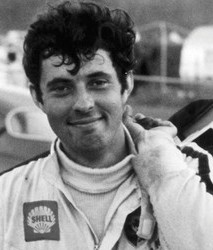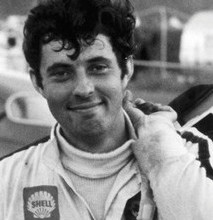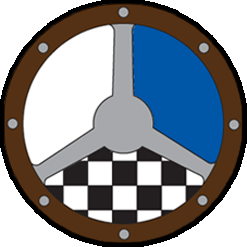Ask a pro
Receive advice directly from today’s top stars


Brian Redman
Sports car legend & former F1 driver
Brian Redman, sports car legend and former F1 racer is the latest online driving instructor for SAFEisFAST.com.
Redman was one of the leading sports car racers of his generation, winning the 1970 Targa Florio, the 12 Hours of Sebring (twice) and the Daytona 24 hours (three times).
Redman had a short spell in F1, competing in 12 grands prix between 1968 and 1974. He achieved a third place podium in his first ever F1 grand prix, and went on to finish an impressive fifth in the rain at the 1972 Monaco GP.
Redman has recently published his racing autobiography, entitled ‘Brian Redman: Daring Drivers, Deadly Tracks’. The 300-page book, published by Evro Publishing, covers the 1965-1975 seasons and offers a riveting account of Redman’s racing career.
Brian Redman answers your questions!
-
Jackie Toms
If the odds of dying in a race-car were one-in-three during your early career, what made you continue racing?




I was asked to leave school at 16 – “we can’t teach you anything,” they said – in 1958 and then when I was 21 my maternal grand-father died. I bought his business, which made mop-heads, the things you clean the floor with, for $1,000, from my mother. We manufactured them in Burnley, Lancashire and I delivered them in my Morris 1000 “Woody” all over the north of England and the southern part of Scotland, driving like a madman.
I fitted the Morris with a Shorrock super-charger, harder brake linings, anti-roll bar front and rear, and an anti-tramp bracket at the back – but no seat belts or roll-cage of course!
I thought I’d better get off the road before I killed myself, or worse, someone else! I turned professional in 1967 when a friend, David Bridges, offered me $60 a week, guaranteed for a year, with a car and a mechanic. By 1968 I was driving a Ford GT40 for John Wyer Gulf, with Jacky Ickx, and a Cooper F1 car.
So, the short answer is I continued racing because at last I’d found something I could do reasonably well and at the same time, earn a living! -
Thomas May
Who was the toughest competitor you ever raced against?




In long-distance racing I was lucky to drive with two of the best drivers in the world, Jacky Ickx in the GT40 and Ferrari 312PB and Jo Siffert in Porsche 908s and 917s.
However, although I was lucky enough to enjoy a good deal of success in endurance racing, I enjoyed the accuracy and vision more in single-seaters. Especially driving the Carl Haas/Jim Hall Lola T330/332 F5000s.
When USAC joined with the SCCA in 1974, a sudden influx of excellent USAC drivers appeared in F5000. Mario Andretti, the Unser brothers, Gordon Johncock, Johnny Rutherford and others.
I have to say, that Mario was my toughest competitor during 1974-75, before he went Formula One. We raced hard and clean for those two years and never touched wheels or had a bad word. Although, Mario’s Vels Parnelli team took away my chief mechanic, Jim Chapman, at the end of the 1973 season, and we had a superb crew, led from the front by Jim Hall. I’m sure Mario would agree that it was the superb reliability of our car that allowed me to win the F5000 Championships! -
Greg Jones
Who was your greatest overall driver of the 1960s and 1970s?




When I started racing in the “Woody” in 1959, a certain young Scottish sheep farmer, Jim Clark by name, was winning local races in what appeared to be an effortless fashion. Later, in 1967, we raced in Formula 2 together. Indeed, I learnt two valuable lessons from Jim:
- When I asked if he exercised, he replied: “Och aye laddie – I lift my leg to get into bed at night.” I’ve followed his advice ever since.
- In those far-off days, no one had airplanes and there were few commercial flights. So, every Sunday evening after a race there would be celebratory parties and dinners. On one such evening, in Barcelona, we were in a pleasant restaurant, with the wine and conversation flowing nicely. After the main course was finished, Jim took his knife, balanced a pat of butter on it and gave it powerful flick. I watched with interest as it landed on the nose of an attractive young lady. Instantly, my first, but by no means last, food fight was started!
-
Nick Mannion
What was the difference between Ferrari and Porsche in the ways the teams were run when you raced for them?






Although I’d driven one Formula 2 race for Ferrari in 1968, it was 1972 with the 312PB before I had a regular drive. As it happened, the team manager, Peter Schetty, was Swiss and an excellent former driver in his own right. So we had none of the chaotic pit stops that Ferrari was well known for.
In 1971 Ferrari concentrated on the 312PB deserting the 512, which was in its last year of eligibility. Although leading races and setting fastest laps, it didn’t win until November when Clay Regazzoni and I won the Kyalami Nine Hour race. In 1972, it won every race except Le Mans, where Ferrari didn’t go because of concerns about the reliability of the three litre F1-based engine.
In 1969, when I drove 908s for the Porsche factory team, it was the first time, because of the change in engine size regulations, that Porsche had a chance to win the manufacturers’ championship, which they did. In the early races, Porsche ran five cars, with ten drivers. Six Germans, three English (Vic Elford, Ricahrd Attwood, and I) and one Swiss (Jo Siffert). All this was managed by another excellent Swiss driver and manager, Rico Steinemann.
In 1970 the renowned team owner and manager, John Wyer, took over the running of the official Porsche 917s and 908/03s (built only for the Nurburgring and Targa Florio).
So the short answer to the question is, there wasn’t much difference in the way the teams were run! -
George Thompson
Racing has made some amazing improvements in driver safety in recent years and you raced throughout the period. How did it all come about?




Yes indeed. In my first year in F1 with Cooper, half the drivers didn’t even wear seat-belts. They would rather be thrown out, or have the ability to jump, in case of fire, which was all too common in those days. I was in six fires in a four-year period, between 1968 and 1972.
It was, of course, Sir Jackie Stewart who started the safety campaign after he was trapped partially upside down, with fuel flowing over him after he aquaplaned off the track at the notorious Masta Kink during the 1966 Belgian Grand Prix at Spa-Francorchamps. Jackie was trapped in the car,
and was eventually released by BRM team-mates Graham Hill and Bob Bondurant who had also aquaplaned off but with less serious results. They had difficulty releasing the steering wheel and did so by borrowing tools from a spectator. There was no fire truck and no ambulance.
The Chairman of BRM, Louis Stanley, was a larger-than-life character, full of pretension and bombast. Disliked by nearly everyone, he never-the-less
was a huge supporter of greater safety in motor-racing, helping to supply a mobile hospital and safety services. I would imagine Fernando Alonso is very grateful for Jackie Stewart and Louis Stanley’s efforts!SAFEisFast video: The Evolution of Safety
-
Adam Smyth
What were the greatest moments of your career that you picked out for your new book?




With my co-writer Jim Mullen, we decided to pick out certain significant moments like Spa, Daytona, Le Mans, the Targa Florio, F5000, 2-litre etc, because we wanted the book to ‘flow’ nicely, without too much painful detail! I have been very fortunate to have raced in a very interesting era, to have driven some incredible race cars and to have survived some very bad accidents. Mark Hughes, the editor, has done a wonderful job of putting everything together with a superb selection of over 300 photographs – or so I’m told, I haven’t actually counted them!
-
Marc Cohn
What would you say is the best thing that you have learned throughout your driving career?




It’s probably to never give up your pursuit of a goal.
Many, many times I have been in the depths of despair. One example was my stupid retirement to South Africa at the end of 1970 that lasted only four months.
I’d retired from the best team in endurance racing, John Wyer Gulf Porsche, and the driver who took my place, Derek Bell, never looked back!
The accident at Spa in 1968 was another. I’d just reached the top, and in an instant was at the bottom again!
Plus there was the fire on the Targa Florio when I stood-in for Derek as he’d never done it and Siffert and I had won the year before.
Another example was the neck-breaking accident at St. Jovite in 1977 when my new Lola T333 single-seat Can-Am took off after I lowered the front wing by a quarter of an inch. That broke my neck, C1, left shoulder, sternum and ribs, and the ambulance blew a tire on the way to hospital. When my wife, Marion, arrived from England the next day, the front page of the Montreal paper showed the drivers working on the wheel, me in the back not looking too good. The headline ran: “Redman est Mort (Redman’s Death)”. It’s all in the book! -
Anonymous
For the endurance races, which was your favourite track? And what was it like to race at Spa?




Well, Spa was my favourite – but only after the race! When I first raced there in 1966 in a Ford GT40, there were no barriers, just trees and it was so fast. Although I’d been driving a Lola T70 Can-Am car in the U.K. and thought I could drive anything, anywhere, I almost retired from racing at the end of the first day of practice. Sir Jackie Stewart has offered his opinion that the Nurburgring was the most difficult track. Of course, with 160 odd turns, over hill and down dale, for 14.5 miles sometimes with changing weather conditions, it is difficult, but it doesn’t have the sheer, unrelenting speed of Spa.
In 1970, in the Porsche 917K, we approached the Masta Kink at 214mph, with the Kink itself being taken at around 180mph. The race average, including pits stops, was 149 mph and the fastest lap was over 160mph. I managed to win five times at Spa, and three times at the Nurburgring. -
Graham
How would you define the ‘limit’ of a car on a given track on a given day?




I suppose the ‘limit’ is when you lose control completely! Racing is very much a game of ‘balance’, so that wherever you are, rain or shine, you want the car to be as predictable as possible with not too much oversteer or too much understeer (push).
SAFEisFAST video: The Perfect Lap
-
Wayne Mausbach
Was the Porsche 935 the scariest car you drove? If not, which one?




The 935 wasn’t particularly scary, it wasn’t the easiest of cars to drive as it had quite a bit of “push” until you were up to full racing speed. Also, there was noticeable throttle-lag, so it was difficult to balance the car in the corners using the throttle as you would with a normally aspirated race car. The scariest was Probably the original 917 in 1969. Built by Porsche in a big hurry, it was based on the 3-litre 908, but with four more cylinders making it 4.5-litre.
As mentioned earlier there were 10 factory drivers, so when Porsche called me in March 1969 to come and test the new 917, I thought why do they want me, when they have six German drivers nearby? I said I’d call them back, then rang my co-driver Jo Siffert in Switzerland and asked if he’d driven the 917. His reply convinced me and I was unable to go. “Breean, we let ze others find out what breaks first!” -
Justin Casey
What is some advice you would give to a younger racer like myself (22) towards progressing their career?




Well, it’s important to get experience and these days it’s well known that go-kart racing gives valuable seat time. In my day there were no go-karts and no driver schools. However, we were lucky in that most races were one day, the tracks were not too far off and we just used our everyday street cars, put electric tape over the headlights, painted a number on the side using shoe whitener, and went racing!
Today this is not possible and so the costs, even at a lower level, are very high. It also depends on what you wish to do – just race or with ambition to advance and become a pro. If you are completely dedicated, you can do worse than become an instructor at a school. Many past and present pro racers got their break through meeting wealthy clients who went on to help them. Good Luck!SAFEisFAST video: Making the Transition from Karts to Cars
-
Justin Casey
How would you recommend approaching a sponsor/partner to ask for funding and/or support?




I’m not an expert on this as I never had to do it! I’m sure our esteemed Road Racing Drivers Club President, Bobby Rahal, is best equipped to answer this question.
The best sponsorship-raiser in my day was a racer named Guy Edwards. He wrote a book on the subject and although it’s so long ago, many parts are relevant today. Its called: Sponsorship and the World of Motor Racing.SAFEisFAST Video: Marketing and Sponsorship Overview
-
Anonymous
Was Steve McQueen at the same level of talent and skill as the other professionals you teamed up with?




Both Steve and Paul Newman were dedicated racers. I have no doubt that if they had been able to devote their time and lives to motor racing, they would have been as good as anyone.
Fortunately for them, they chose a more lucrative career! -
Jason MacDonald
How do you have to adapt your approach to racing when swapping single-seaters for sportscars?




In my day we drove everything we could simply to earn a living. Porsche 917s for $1,000 a race at Le Mans, Sebring and Daytona and $750 at all the others. F1 was $1,200 a race. So we quickly became adept at driving different cars with different layouts – whether that was right-hand drive, four or five-speed shift on the right, some with the shift on the left. Left-hand drive with both left and right shift levers. It would take me about five laps to switch from one to the other.
SAFEisFAST Video: Open Wheel vs. Closed Wheel Racing
-
Ben Smith
What is your top tip for succeeding in endurance racing?




Well, to finish first, you first have to finish! To succeed in any form of racing you have to look at what the competition is, and choose the best car and team. Much of my success came from being with the best team in that form of racing, at that time.
SAFEisFAST video: The Art of Endurance Driving
-
Anonymous
You have won some very famous races – which one would you chose as your best moment in motor sport?




t’s not always the most famous races that are your best. For example, winning the Targa Florio – 44 miles on one lap and over 700 corners per lap, was a famous win. I caught the local hero, Nino Vacarella on my first (of three) laps. Three times I tried to pass and each time, he was going to push me off the road in his big 5-litre Ferrari 512S weighing some 1,800 lbs (against my Porsche 908/03 at 1,100 lbs). So, I stayed behind for over 100 miles, closed right up at the pit stop and we passed him – in the pits! How glorious!
Of the famous races, perhaps I’d choose Spa-Francorchamps in the 917K in 1970. Both Jo Siffert and I had tyres come off the rim in practice – there were no safety ledges or bolts in those days, centrifugal force simply pulled the centre of the tyre out and the bead away from the rim.
Another great moment was at the Nurburgring in 1969, driving a factory 908/02. When I took over from Siffert, Pedro Rodriguez took over from Chris Amon in the factory Ferrari 312. The expectation was that Pedro would romp off into the distance, but I pulled out over one minute and we won.
Winning the 2-litre championship in 1970 by 1 point over Lola, when I took the lead on the last corner of the last lap of a 500KM race was also special. As was finishing second to Mario Andretti at Mosport in a 1975 F5000 race where we lapped the field. I gave it everything I had and finished up just half a second short. -
Connor Kennard
My question is, as a soon to be college student with almost no loans, but also a shoestring budget, should I focus on a series where I will have the most seat time, or rent a car, or wait until I can purchase my own car




Connor, that’s a difficult question. As mentioned earlier, karting would give you the best experience for the least money. Also, you would quickly find out if this is what you really want to do – and how much aptitude you have for racing.
SAFEisFAST Video: Winning A Racing Scholarship
-
Steve Jenkins
What are the main challenges for a driver when it comes to finding the limit during night-time races?




Very often, mostly due to cooler air, you can go as fast or faster at night than in the daytime. In my day, there were no lights on the tracks and the headlamps weren’t all that good.
So, during daytime you make a mental note of braking points – normally I don’t do this, simply braking when it feels like the right time! But doing that means you know you can brake at the same place in the night, and still make it round the corner. As motor racing is very much a “seat of the pants” sport, you get a feeling of when the car is at, or approaching, the limit of adhesion. -
Harry Thomas
What do you make of the growing strength of the World Endurance Championship and does that give young drivers more career options?




Yes indeed. In my opinion the growth of the World Endurance Championship and of the IMSA series in the United States is a very good thing. It gives the aspiring young driver far more possible ways of entering motor sport.
To me, these sports car championships are far more “real” than F1 with its constant rule changes and huge costs. In 1970 when sports car racing was just as popular as F1, and as fast or faster in places, there was a strong rumour that Bernie Ecclestone was going to try to kill endurance racing, which to some degree he did. But now the wheel is turning.
 Road Racing Drivers Club
Road Racing Drivers Club
 Share
Share







